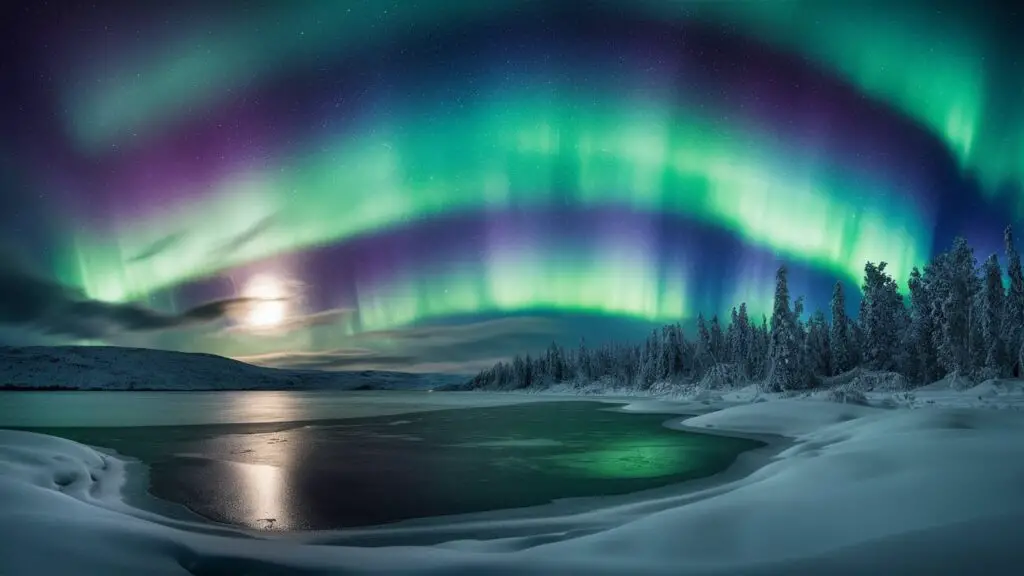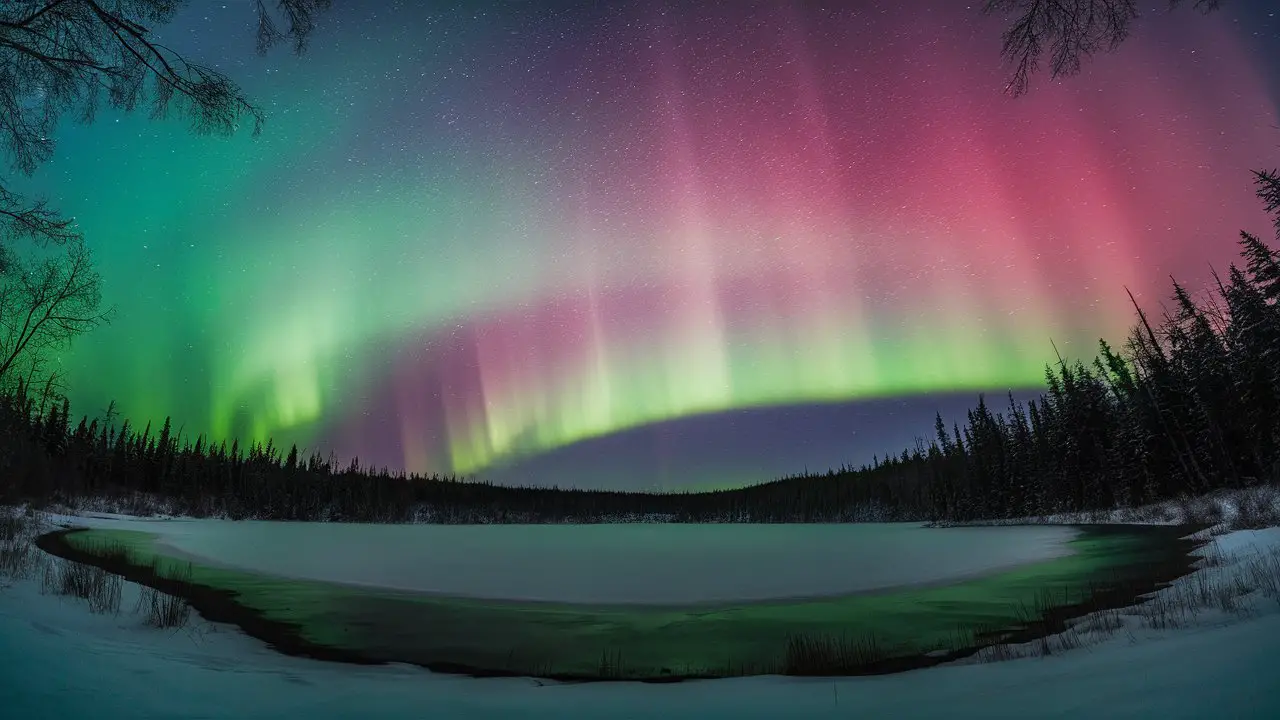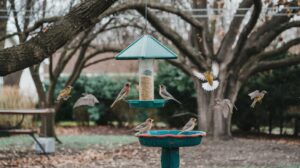You gaze up at the dark night sky, wondering if tonight will offer a glimpse of the elusive and awe-inspiring aurora borealis. As a lover of astronomy and natural wonders, you understand the complex science behind this dazzling light show. Charged particles streaming from the sun interact with gases in the atmosphere to produce curtains of color. But predicting exactly when and where the northern lights will be visible remains challenging. In this article, you will learn what factors influence auroral activity and how modern forecasting methods are improving our ability to anticipate auroral displays. Equipped with this knowledge, your next night under the stars may reveal nature’s ethereal painting in the sky.
What Is the Aurora Borealis?
The Northern Lights Explained
The aurora borealis, commonly known as the northern lights, are a natural light display in the sky predominantly seen in the high latitude regions of the Northern Hemisphere. They are caused by the collision of charged particles from the sun with atoms in the earth’s atmosphere. When the sun’s charged particles collide with atmospheric gases such as oxygen and nitrogen, the energy from these collisions is released in the form of light.
What Causes the Colorful Lights?
The color of the aurora depends on which atmospheric gas is hit, and how much energy is exchanged. The most common auroral color, a pale yellowish-green, is produced by oxygen molecules hit by low-energy electrons. Red auroras are produced by high-energy electrons colliding with oxygen, and more rarely by nitrogen. Blue or violet auroras are caused by ionized nitrogen molecules reacting with lower-energy electrons. The rarer pink auroras are a mixture of the red and blue hues.
The Best Places to View the Lights
The northern lights are best viewed in areas close to the Arctic and Antarctic Circles. Some of the prime locations to spot the aurora borealis include northern Canada, Alaska, Norway, Sweden, Finland, Russia, and Iceland. The auroras can often be viewed on clear nights, far away from city lights. While they are most frequently seen around midnight, they can occur almost any time throughout the night.
To view this dazzling display in the night sky, find a location far from the light pollution of cities, lay back and enjoy nature’s light show as the auroras dance across the stars. A magical experience you will never forget!
Where Can You See the Northern Lights?
To experience the wonder of the aurora borealis in person, you will need to venture to areas located in the northern latitudes, typically above 60 degrees north. ###Some of the best locations to spot the northern lights include:
- Alaska and northern Canada: Parts of Alaska, Yukon, Northwest Territories and Nunavut in Canada offer pristine views of the night sky and are located directly under the auroral oval, making them prime aurora viewing destinations. Cities like Whitehorse, Yellowknife and Fairbanks are popular hubs for northern lights chasers.
Scandinavia: Countries like Norway, Sweden and Finland in northern Europe are fantastic for aurora borealis viewing. Head to the northern reaches of Swedish Lapland, Finnish Lapland or Tromsø in northern Norway for the best chances of a spectacular light show.
Iceland: Iceland’s location in the North Atlantic Ocean and sparse population mean limited light pollution and unobstructed views of the night sky. Almost the entire country lies within the auroral zone, with popular spots including Reykjavik, the Golden Circle and Lake Mývatn.
To maximize your chances of spotting the northern lights, plan your trip between late August and early April, avoid the full moon, find an area with little to no light pollution, check auroral activity forecasts and be prepared to stay up late – the lights are often most active between 10pm and 3am. With the right location and conditions, you’ll be delighted by the dazzling display of colors dancing across the sky. The aurora borealis is a stunning natural wonder that should be on everyone’s bucket list.
Aurora Forecasting: Predicting Optimal Viewing Conditions
Solar Wind and Geomagnetic Activity
The intensity and frequency of the northern lights are closely tied to the level of geomagnetic activity, which refers to disturbances in the Earth’s magnetic field. When the sun ejects charged particles during solar wind events like solar flares or coronal mass ejections, these particles can interact with the Earth’s magnetic field, causing geomagnetic storms that lead to dazzling auroral displays. By monitoring the sun and space weather, scientists can detect increased solar activity and predict when the resulting geomagnetic storms are likely to reach the Earth, enhancing the chances of seeing the aurora.
Dark, Clear Skies
To observe the aurora borealis, you need a location with little light pollution and a clear, unobstructed view of the sky. The aurora is often most visible in rural areas, though it can sometimes be seen from cities as well. Check an aurora forecast and weather reports to find a night that will be clear, without bright moonlight, in a location where the aurora is predicted to be active. The longer you can spend observing in the dark, the more your eyes will adjust and the more detail you will see in the lights dancing across the sky.
Peak Viewing Times
Though the aurora can appear at any time of night, the optimal viewing window is often between 10 PM and 3 AM local time. At this time, the sky is darkest, and you are on the side of the Earth facing the sun, where geomagnetic activity has the strongest effects. The aurora can be active for hours at a time, so give yourself plenty of time to find the perfect viewing spot, let your eyes adjust to the darkness, and watch the sky for signs of the northern lights coming to life. With the right conditions and patience, you’ll be dazzled by the aurora borealis in all its glory.
In summary, closely monitoring space weather and solar activity, finding ideal viewing locations and conditions, and choosing the right time of night are the keys to successfully forecasting and experiencing the wonder of the northern lights. With the aurora, timing and luck are everything, but with the right knowledge and preparation, you can increase your chances of witnessing one of nature’s most spectacular shows.
Planning Your Northern Lights Vacation
To witness the spectacular Aurora Borealis in person, significant advance planning is required. Selecting the optimal location and time of year are the most critical steps. The aurora is visible in a circular band around the Arctic and Antarctic circles, known as the auroral zones. Within these regions, choose a destination as far from light pollution as possible for the best views.
Location
The northern auroral zone includes parts of Alaska, Canada, Greenland, Iceland, Norway, Sweden, and Finland. Popular destinations include Yellowknife and Whitehorse in Canada; Tromsø, Alta, and Svalbard in Norway; and Abisko National Park in Sweden. These locations offer a high probability of clear skies and active auroral activity during peak seasons.
The southern auroral zone includes parts of Antarctica, New Zealand, and southern Australia. However, the aurora australis is more difficult to observe due to the extreme climate and limited infrastructure in Antarctica. New Zealand’s Stewart Island offers the most accessible views in the southern hemisphere.
Timing
The aurora is often most visible around the equinoxes in March and September when the sky is darkest. The summer months of June and July in the northern hemisphere also see increased solar activity and longer nights, though warmer weather may produce more cloud cover. Check historical auroral activity data to determine the best month to plan your trip.
Within your destination, aim to stay at least 3 to 5 nights to increase your chances of seeing the lights. The aurora can appear with little warning on any clear night, so flexibility is key. Connect with local guides who monitor solar activity and can alert you when the aurora becomes visible. They can also recommend the best locations to view the display based on current weather conditions.
Planning a memorable northern lights vacation requires patience and adaptability. But for those fortunate enough to witness the auroral glow illuminating the night sky, the rewards of such an enchanting natural phenomenon are well worth it. With the proper planning and a little luck, you may fulfill your dream of seeing the aurora’s dazzling performance.

Aurora Borealis FAQ: Everything You Need to Know About the Northern Lights
What causes the Northern Lights?
The Aurora Borealis, commonly known as the Northern Lights, are a natural light display in the sky predominantly seen in the high latitude regions. They are caused by the collision of charged particles from the sun with atoms in the earth’s atmosphere. When the sun’s magnetic energy is intensified, it sends out bursts of electrically charged particles that stream towards the earth. As these particles interact with the earth’s magnetic field, they are directed to the Polar Regions where they collide with atoms and molecules in the atmosphere, especially oxygen and nitrogen. The energy from these collisions is released in the form of light, producing the beautiful auroral displays of color that people observe from the ground.
What’s the best time of year to see the Northern Lights?
The Northern Lights are best viewed during the fall and winter months in the Northern Hemisphere, specifically between September and March. This is because during these months, the nights are longer and darker, increasing your chances of seeing the auroral displays. The equinoxes in March and September also tend to be active times for geomagnetic storms that fuel bright Northern Light shows. However, the lights can still be visible year-round when solar activity is high and the sky is dark enough. The peak viewing hours are typically between 10 pm and 3 am when the sky is darkest.
What colors can the Northern Lights be?
The most common colors of the Aurora Borealis are pale green and pink, but they can also be red, yellow, blue, violet and white. The type of color that appears depends on the type of gas particles that collide with the charged particles, as well as the amount of energy in the collision. The most frequent color, pale green, is produced by oxygen molecules about 60 miles up that have been excited by the charged particles. Rare red auroras are produced by high-altitude oxygen, while nitrogen produces blue or violet auroras. The aurora can appear as a diffused glow, rays, arcs, rippling curtains or shooting streamers.
Where is the best place to see the Northern Lights?
The Aurora Borealis is best viewed in areas within and encircling the Arctic and Antarctic Circles. Some of the prime locations to spot the Northern Lights include:
- Alaska and northern Canada: Especially the Yukon, Northwest Territories and Nunavut.
- Northern Scandinavia: Countries like Norway, Sweden, Finland and Iceland offer fantastic views.
- Northern coast of Russia: Parts of Siberia, especially around Murmansk and Arkhangelsk.
- Scotland and Northern England: As far south as Aberdeenshire and Cumbria on clear nights.
- Antarctica: For viewing the Southern Lights or Aurora Australis.
The key requirements are a location with little light pollution, clear and dark skies,
Don’t Miss a Thing! Enhance Your Wildlife Photography with Ultra-X Night Vision Goggles.
GET NOW!

Conclusion
As you have seen, predicting the aurora borealis is a complex endeavor that relies on data from an array of sources. While forecasting methods continue to improve, seeing the northern lights ultimately depends on solar activity, clear skies, and perhaps a bit of luck. Even if your initial attempts to witness nature’s ethereal light show don’t succeed, don’t get discouraged. There will always be another opportunity to fulfill your dream of gazing up at the glowing, dancing ribbons of the aurora. With persistence and the right tools, you’ll eventually stand beneath the flickering night sky in awe, watching as the northern lights unfold in all their mysterious glory.





